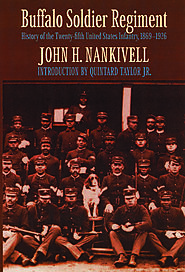-
About
- About Listly
- Community & Support
- Howto
- Chrome Extension
- Bookmarklet
- WordPress Plugin
- Listly Premium
- Privacy
- Terms
- DMCA Copyright
- © 2010-2025 Boomy Labs


Listly by bstephanie9312
After the Civil War, the U.S. military firmly established a, regiment for African-American soldiers. With dwindling enlist numbers, units were combined and sent to Texas in 1870.

After the Civil War, the U.S. Army needed more men so six segregated regiments of African American soldiers were created and stationed across Texas. The legendary Buffalo Soldiers served their country and changed the course of military history.

This website give a brief history of the Buffalo Soldiers while they are in Texas.
![Buffalo Soldiers: The Unknown Army - Texas Parks and Wildlife [Official]](http://media.list.ly/production/576165/2960606/2960606-buffalo-soldiers-the-unknown-army-texas-parks-and-wildlife-official_185px.jpeg?ver=0775263594)
[cc] The Buffalo Soldiers helped settle the west but for many years the contributions of these African-American soldiers were largely overlooked. Meet one ma...

Publishes books and journals especially in American history, the American West, and Native American studies. This book gives the official history of the 25th Infantry.

GRATZ, LAWSON DANIEL (?–1909). Lawson Daniel Gratz, African-American Civil War veteran and Buffalo Soldier, was born a slave in Kentucky. Sources give his birth date variously as 1834, 1836, and 1839. When he gained freedom and volunteered for service in the Union Army on June 24, 1864, enlisting officers recorded his birthplace as Fayette County, Kentucky, and his age as thirty, making 1834 possibly the year of his birth. The 1900 United States census recorded the time of his birth as September 1839. A Texas Historical Marker lists Gratz as a native of Mason County, Kentucky, and born on the “plantation of Benjamin Gratz” on September 15, 1839. Gratz (or Gratts, as his name was written at times) became a sergeant in Company C of the 114th United States Colored Troops, a unit that was ordered to Virginia in January 1865 and participated in Gen. Ulysses S. Grant’s campaign that forced the surrender of Gen. Robert E. Lee’s Confederate army at Appomattox in April. The 114th USCT remained in Virginia until July 1865 and were then ordered to the Rio Grande as part of the United States Army guarding the border with Mexico. Gratz and his fellow soldiers were mustered out of service in April 1867.

RED RIVER WAR. The Red River War, a series of military engagements fought between the United States Army and warriors of the Kiowa, Comanche, Southern Cheyenne, and southern Arapaho Indian tribes from June of 1874 into the spring of 1875, began when the federal government defaulted on obligations undertaken to those tribes by the Treaty of Medicine Lodge in 1867. Rations to be issued the Indians consistently fell short or failed entirely, gun running and liquor trafficking by white profiteers were not curtailed, and white outlaws from both Kansas and Texas who entered the Indian Territory to steal Indian stock were not punished or even, in most cases, pursued. On all these counts, the two federal Indian agents who dealt with the Indians, James M. Haworth at Fort Sill and John D. Miles at Darlington, both Quaker missionaries, did everything in their power to remedy the situation, but they received no cooperation from either the military or the Washington officials of the Office of Indian Affairs.

TINAJA DE LAS PALMAS, BATTLE OF. The battle of Tinaja de las Palmas (also known as the battle of Rocky Ridge), one of a series of skirmishes in the Victorio campaign, was fought on July 30, 1880, by Apaches and elements of the Tenth United States Cavalry. The site of the battle is in Hudspeth County fifteen miles southeast of Sierra Blanca, Texas. During 1876–77 Apache depredations in southern New Mexico, West Texas, and northern Mexico increased with alarming frequency. Apache raiders struck at ranches on both sides of the international border and at stagecoaches and travelers on the San Antonio-El Paso road. Many raids were attributed to Indians from the Mescalero reservation near Fort Stanton, New Mexico. To make matters worse, the Indian Bureau consolidated the Warm Springs Apaches with the Apaches on the San Carlos Reservation in Arizona, in spite of the fact that these two bands had long been antagonists. A few months later Victorio fled the reservation with nearly 300 of his people, and he eluded the army for the next two years. After they were eventually captured, Victorio and his band were allowed to settle in their native southern New Mexico. Nearly a year later, however, Indian Bureau officials decided once again that the Warm Springs people should be returned to Arizona, and the consequences were predictably explosive. Victorio, with a combined band of Warm Springs, Mescalero, and Chiricahua Apaches, raided into Mexico, striking at anything in their path.